Recep Akif Tasci
Active RISs: Modeling and Optimization
Jul 22, 2025Abstract:Reconfigurable Intelligent Surfaces (RIS)-empowered communication has emerged as a transformative technology for next generation wireless networks, enabling the programmable shaping of the propagation environment. However, conventional RISs are fundamentally limited by the double path loss effect, which severely attenuates the reflected signals. To overcome this, active RIS architectures, capable of amplifying impinging signals, have been proposed. This chapter investigates the modeling, performance analysis, and optimization of active RISs, focusing on two hardware designs: a dual-RIS structure with a single Power Amplifier (PA), and a reflection amplification structure at the unit cell level using tunnel diodes. For the PA-based design, a comprehensive mathematical model is developed, and closed-form expressions for the received signal-to-noise ratio, bit error probability, and Energy Efficiency (EE) are derived. An optimization framework for configuring the phase shifts and amplifier gain is proposed to maximize system capacity under power constraints. Regarding the second design, the integration of a tunnel diode into the unit cell is carefully studied by analyzing its I-V characteristic, enabling the derivation of the negative resistance range and the power consumption model. Furthermore, the intrinsic phase-amplitude coupling of the reflection coefficient is characterized through compact linear algebra formulations, enabling practical optimization of active RISs. Extensive numerical simulations validate the theoretical analyses, demonstrating that active RISs can effectively overcome the double path loss limitation and achieve favorable EE trade-offs compared to passive RISs. Finally, the trade-off between the available power budget and the number of active elements is examined, revealing that a higher number of active elements does not always lead to optimal performance.
Flip-KLJN: Random Resistance Flipping for Noise-Driven Secure Communication
Apr 15, 2025



Abstract:The information-theoretically (unconditionally) secure Kirchhoff-law-Johnson-noise (KLJN) bit exchange protocol uses two identical resistor pairs with high (H) and low (L) resistance values, driven by Gaussian noise generators emulating Johnson noise with a high common temperature. The resulting mean-square noise voltage on the wire connecting Alice and Bob has three levels: low (L/L), intermediate (H/L or L/H), and high (H/H), and secure key sharing is achieved at the intermediate level (L/H or H/L). This paper introduces the Flip-KLJN scheme, where a pre-agreed intermediate level, such as H/L, triggers a flip of the bit map value during the bit exchange period. For Eve, the bit map flips appear random. Thus, the formerly discarded H/H and L/L situations can also have a pre-agreed bit value mapping, which flips together with the original bit mapping. Thus, Flip-KLJN doubles the key rate and ensures that all three levels on the wire are indistinguishable for Eve. Bit error probabilities are addressed through analytic calculations and computer simulations.
RIS-Assisted Grant-Free NOMA
Jul 23, 2022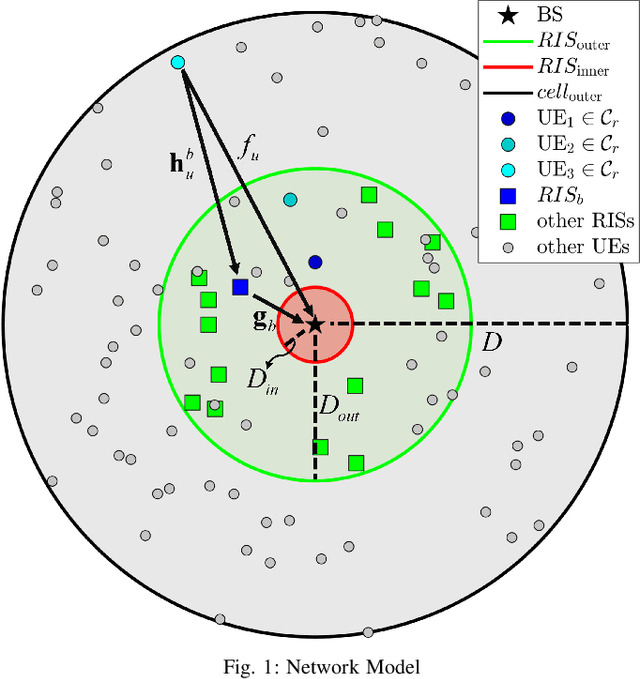
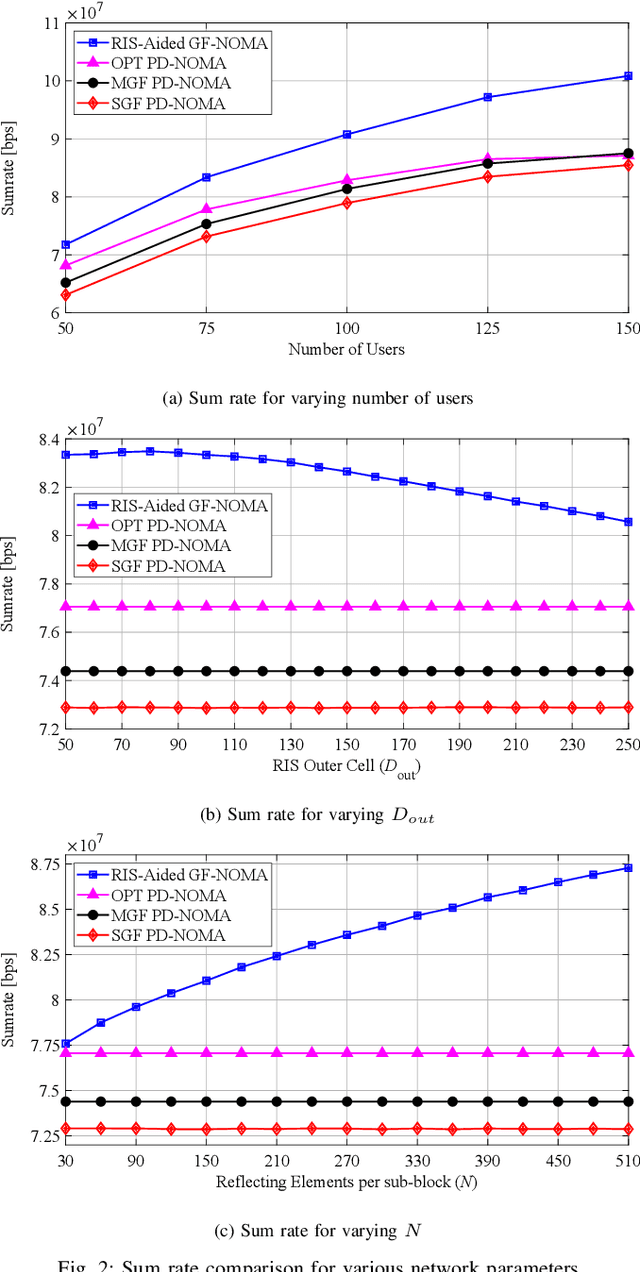
Abstract:This paper introduces a reconfigurable intelligent surface (RIS)-assisted grant-free non-orthogonal multiple-access (GF-NOMA) scheme. To ensure the power reception disparity required by the power domain NOMA (PD-NOMA), we propose a joint user clustering and RIS assignment/alignment approach that maximizes the network sum rate by judiciously pairing user equipments (UEs) with distinct channel gains, assigning RISs to proper clusters, and aligning RIS phase shifts to the cluster members yielding the highest cluster sum rate. Once UEs are acknowledged with the cluster index, they are allowed to access their resource blocks (RBs) at any time requiring neither further grant acquisitions from the base station (BS) nor power control as all UEs are requested to transmit at the same power. In this way, the proposed approach performs an implicit over-the-air power control with minimal control signaling between BS and UEs, which has shown to deliver up to 20% higher network sum rate than benchmark GF-NOMA and optimal grant-based PD-NOMA schemes depending on the network parameters. The given numerical results also investigate the impact of UE density, RIS deployment, and RIS hardware specifications on the overall performance of the proposed RIS-aided GF-NOMA scheme.
An Amplifying RIS Architecture with a Single Power Amplifier: Energy Efficiency and Error Performance Analysis
Nov 18, 2021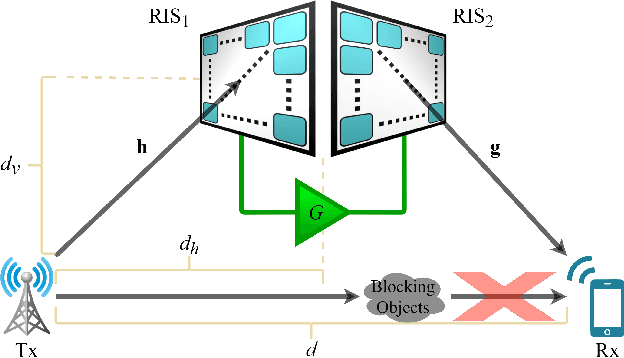
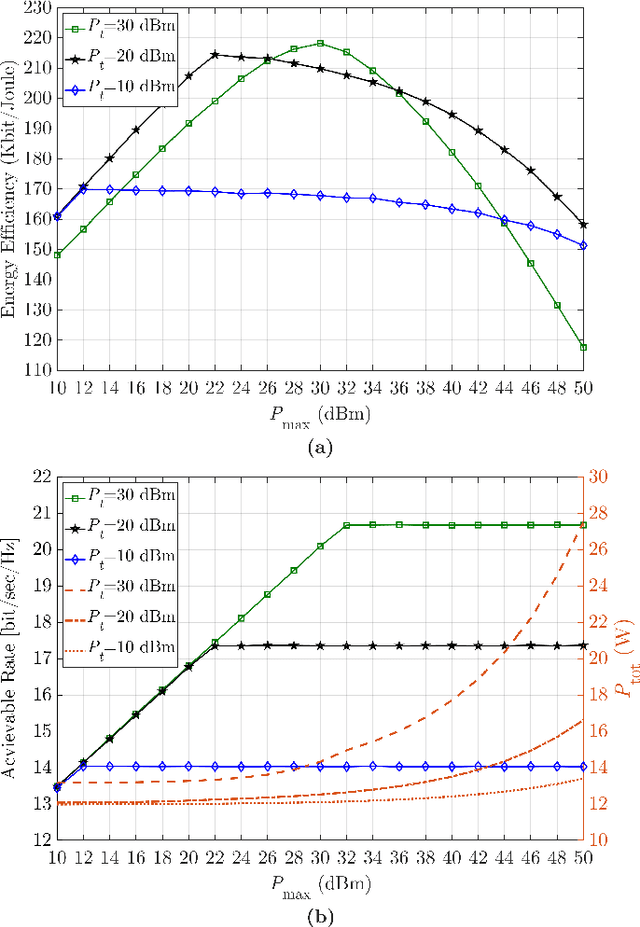
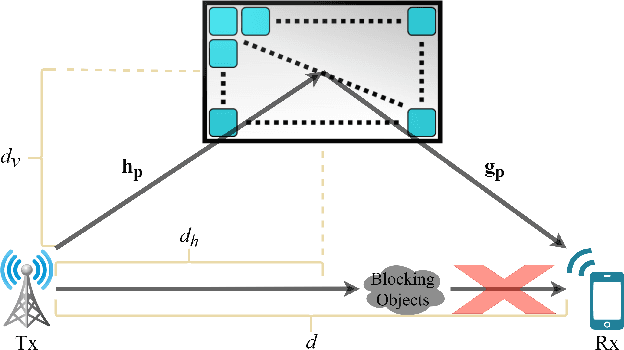
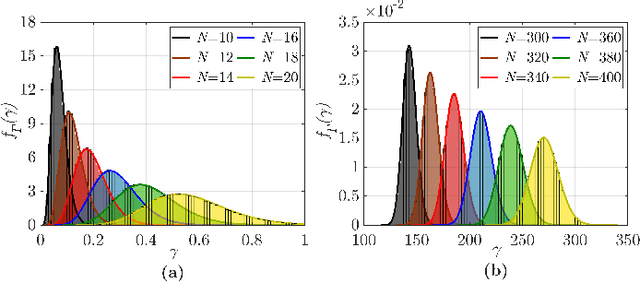
Abstract:Reconfigurable intelligent surfaces (RISs) have recently attracted the attention of the community as a potential candidate for next generation of wireless communication networks. Various studies have been carried out on this technology, which allows the control of the signal propagation environment. However, when an RIS is used in its inherently passive structure, it appears to be only a supportive technology for communications, while suffering from a multiplicative path loss. Therefore, researchers have lately begun to focus on RIS hardware designs with minimal active elements to further boost the benefits of this technology. In this paper, we present a simple hardware architecture for RISs including a single variable gain amplifier for reflection amplification to confront the multiplicative path loss. The end-to-end signal model for communication systems assisted with the proposed amplifying RIS design is presented, together with an analysis for the capacity maximization and the theoretical bit error probability performance, which is verified by computer simulations. In addition, the advantages of the proposed amplifying RIS design compared to its passive counterpart are discussed. It is shown that the proposed RIS-based system significantly eliminates the double fading problem appearing in conventional passive RIS-assisted systems as well as improves the energy efficiency.
 Add to Chrome
Add to Chrome Add to Firefox
Add to Firefox Add to Edge
Add to Edge